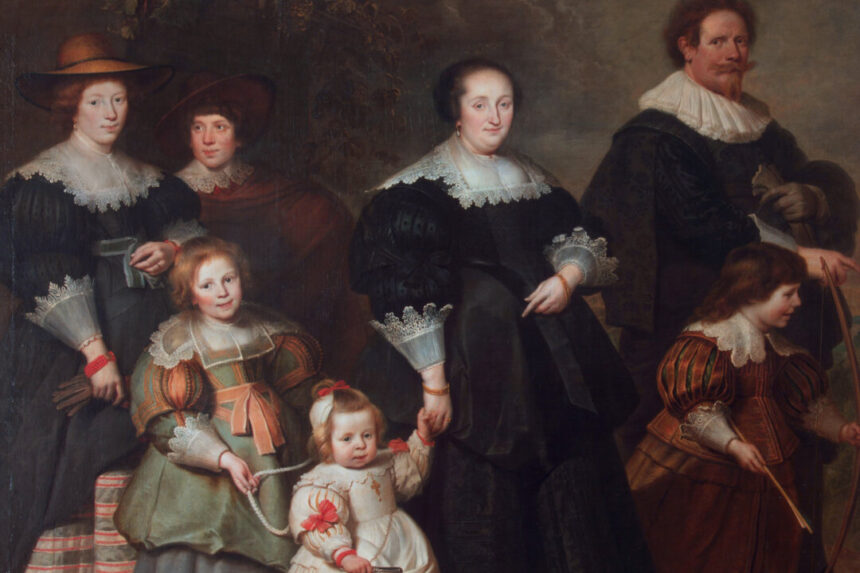Commentary
It’s now been nearly 35 years since E.L. Jones first published his watershed book “The European Miracle.” Jones’s history of Europe’s economic development examined the reasons why Europe—a comparatively poor and backward part of the world in the Middle Ages—somehow became the wealthiest and most productive place on earth in the nineteenth century. The fundamental question remains: why did Europe surpass other civilizations1such as Islam and China—which had once been much richer than the west?
According to Jones, a major factor in Europe’s drive to economic prominence was the high degree of economic freedom. As Jones puts it: “Economic development in its European form required above all freedom from arbitrary political acts concerning private property.” Or, as historian Ralph Raico concluded, Europe’s industrialization was closely connected to the fact that “the economy achieved a degree of autonomy unknown elsewhere in the world except for brief periods.”
But there’s even more to it than that. Another institution at the core of the story of the European miracle is the family, and specifically the European nuclear family. We find that specific European factors led to growing numbers of nuclear families which, in turn, supported the rise of Europe’s private “corporate” organizations that fueled Europe’s ecosystem of decentralized, diverse, and private organizations.
The Historical Origins of the Nuclear Family
One notable characteristic of Western Europe after the Early Middle Ages is an unusually high proportion of nuclear families. Outside Western Europe, so-called “stem families” and “joint families” were more common. In these two family types, grown children and elderly adults more commonly lived together, and the creation of new households was less common than in areas with nuclear families. In joint families, large extended families could be found living together in close proximity or even on a single estate.(One variation of this model is the Roman ideal of the “pater familias.”)
In the case of stem families, most of the grown children leave to start new households while one of the children—often the oldest son—remained living with the elderly parents in anticipation of inheriting the parent’s land or business.
The historical extended families, and the clan structures that accompanied them, went into relative decline during the Middle Ages in Europe. The resulting rise in prevalence of nuclear families appears to have been encouraged by economic factors and also by religious factors tied to the Catholic Church.
Over time, this all encouraged a proliferation of nuclear families, and Greif notes
“By the late medieval period … the nuclear family was dominant. Even among the Germanic tribes, by the eighth century the term “family” denoted one’s immediate family and, shortly afterwards, tribes were no longer institutionally relevant.”
The Rise of the Corporations
This created a need for new organizations to replace the old services offered by extended families. That is, individual nuclear families are generally unable to provide their own means of settling disputes and fostering economic exchange beyond the immediate family.[1] Clans and tribes often provide these resources. So, in order to replace what had once been offered by family networks, groups of families participated in the creation of “corporations.”
These organizations were ”voluntary, interest-based, self-governed, and intentionally created permanent associations. In many cases, they were self-organized and not established by the state.” These included the Church itself, but also monastic orders, universities, the Italian city-states, urban communes, militias, and merchant guilds. All actively sought to protect their own commercial interests in Europe’s various legal institutions.
shows, Europe’s decentralized political power—and the accompanying protections for private property—grew out of complex legal environment of contracts, rights, and other legal considerations forced upon princes and civil authorities by the demands of these corporate groups. Thus, Europe came to be home to political and legal philosophies respecting the idea of “mine and thine” rather than the idea that all belongs to the prince or the collective.
Other Factors
Of course, the rise of nuclear families was not only the result of Church reforms. Economic and ideological factors were significant as well.
Greif observes that Europeans were more open to higher levels of individualism, influenced by ancient Greek, Roman, and Germanic ideals. Economic factors also played a role in the evolution of family structures.
One significant event that impacted the shift in family dynamics was the Black Death. This devastating plague led to a decrease in population, resulting in higher land-labor ratios. As a result, wages for unskilled workers rose, making it easier to establish new economically viable households.
By the sixteenth century, urbanization, new forms of wage work, and proto-industrialization led to increasing wages and economic opportunities. Families sought to pursue economic and social advancements through corporations, which facilitated economic growth by promoting greater exchange, establishing legal frameworks, and fostering trust among non-kin groups.
However, the rise of new political ideologies such as mercantilism, absolutism, and nationalism led to the decline of independent non-state corporations. These movements promoted the consolidation of state power, weakening or destroying many non-state corporations. By the late nineteenth century, free corporations had become extensions of states.
Despite the decline of these organizations, Europeans benefitted from the economic growth and political decentralization they facilitated. The contributions of these corporations to the European miracle continue to impact society today. Please provide a sentence or passage for me to rewrite.
Source link







